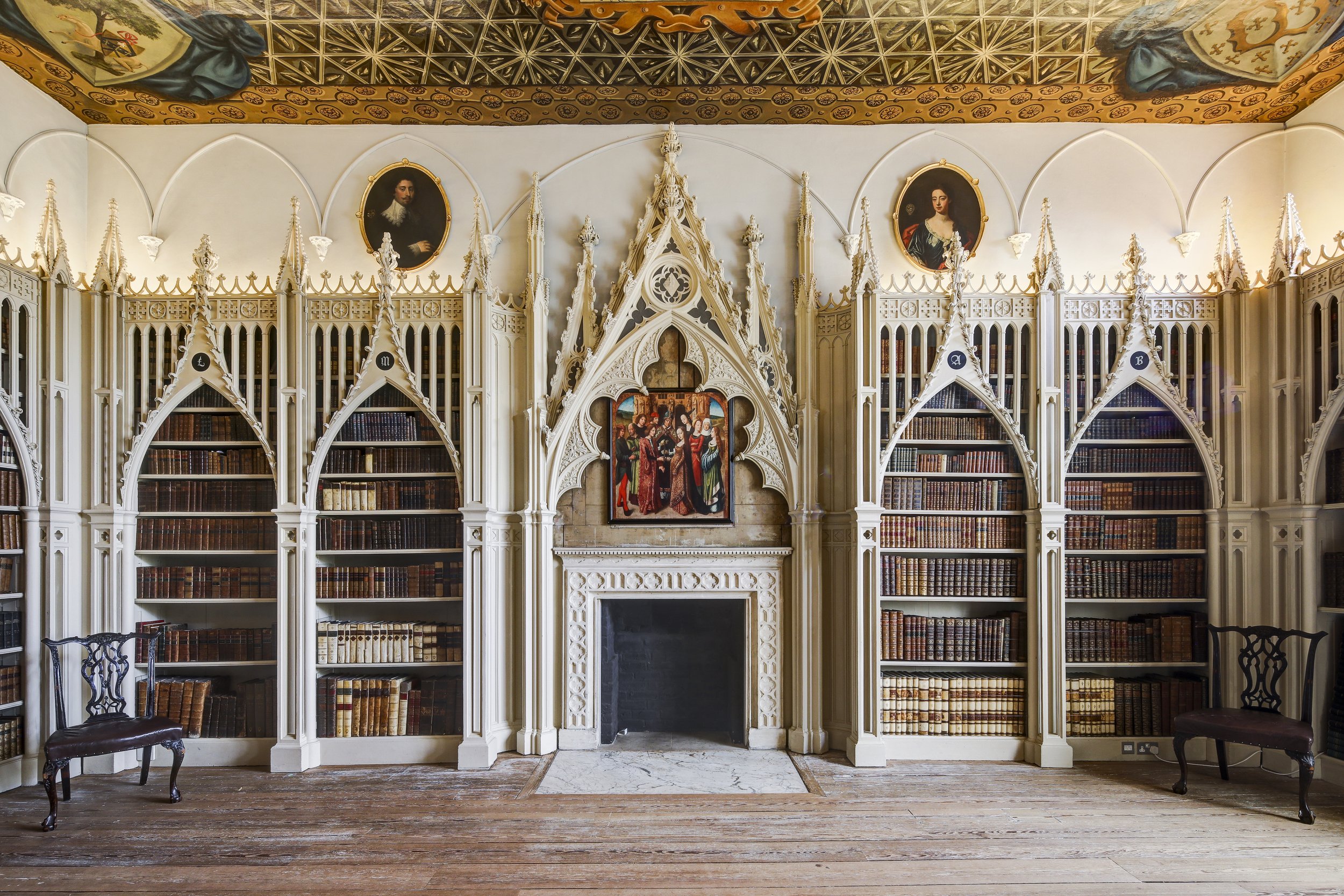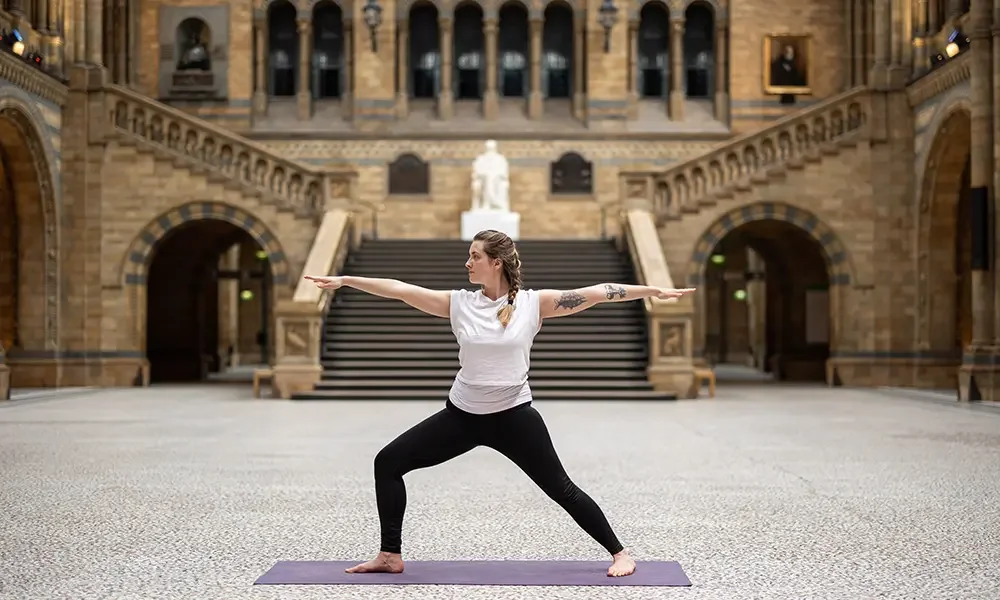Strawberry Hill House & Garden: a triumph of 18th century Gothic Revival architecture
Delve into Horace Walpole's Gothic masterpiece, Strawberry Hill House & Garden.
Image: Strawberry Hill House & Garden. Photo by Kilian O'Sullivan.
Strawberry Hill House, a Gothic Revival villa, is a notable example of 18th-century architectural and landscape design. The story of this Grade I listed House begins in 1747 when Horace Walpole discovered and purchased 'Chopp'd Straw Hall,' one of the last available sites on the Thames in the fashionable area of Twickenham. He set about transforming a couple of cottages into his vision of a 'little Gothic castle,' featuring pinnacles, battlements, and a round tower. This marked the birth of Strawberry Hill House, which even became a tourist attraction during Walpole's lifetime.
Image: Strawberry Hill House & Garden. © Matt Chung.
The popularity of Strawberry Hill House was a key contributing factor in the emergence of Gothic Revival architecture that grew throughout the 18th and 19th centuries, taking inspiration from Gothic cathedrals around Europe. The home was largely designed by Walpole's friends, otherwise known as the 'Committee of Taste,' which included John Chute and Richard Bentley.
The History
Horace Walpole, born in 1717, was a significant figure in 18th-century society, literature, art, and architecture. He was the third son of Sir Robert Walpole, Britain's first Prime Minister. During a Grand Tour from 1739-41, Walpole was influenced by European aesthetics, which is reflected in the design of Strawberry Hill House. As a prolific writer, he composed around 7,000 letters and documented his collection in A Description of the Villa of Horace Walpole. Strawberry Hill House stands as one of the country's most well-documented residences, as Walpole not only penned A Description of the Villa of Horace Walpole, but also detailed it in letters and commissioned John Carter's drawings and Heinrich Muntz's paintings to chronicle the house's evolving appearance.
William Hogarth (1697-1784)Portrait of Horace Walpole, later 4th Earl of Orford (1717 ? 1797) aged 10, 1727-28, Oil on canvas 17 x 14 in. Photo © Christies.
After Horace Walpole's death in 1797, the ownership of the House shifted to his cousin's daughter and renowned sculptor, Anne Seymour Damer. In 1811, it passed to Walpole's great-niece, Elizabeth Waldegrave, and then to her grandson, John Waldegrave. Unfortunately, John's premature death led to the house being inherited by his brother, George, the Seventh Earl of Waldegrave. During this time, the House faced a significant threat. George, who had been imprisoned for 'riotous behaviour,' developed a disdain for Twickenham and decided to let the House deteriorate. In 1842, he organised the 'Great Sale,' a week-long event during which most of Walpole's collection was sold, bringing the House to the brink of ruin.
The House
The House features a fascinating collection of historical artifacts and artworks, each with a deep historical connection. Inside, you'll find various Gothic architectural elements, like the impressive entrance hall staircase adorned with trompe l'oeil wallpaper.
Image: Staircase at Strawberry Hill House & Gardem. © Matt Chung.
The Great Parlour is dedicated to family portraits and historical items, showcasing works by artists like Sir Joshua Reynolds, alongside restored stained glass windows and a fireplace. On the first floor, several remarkable rooms stand out. The Blue Bedchamber boasts distinctive blue wallpaper, a grand four-poster bed, and a replica of a painting by Sir Robert Walpole, 1st Earl of Orford, and Lady Walpole by John Giles Eccardt, intriguingly framed with a 3D printed frame. The original painting is housed at The Lewis Walpole Library at Yale University in the United States of America.
Image: The Blue Bedchamber. Strawberry Hill House & Garden. © Matt Chung.
The Green Closet showcases a cosy desk nook, surrounded by portraits and stained glass windows. The Breakfast Room retains its dark-framed fireplace. Named after its inspiration, the Holbein Chamber reflects Walpole's strong interest in Tudor history and Henry VIII. It housed copies of Holbein drawings, created by George Vertue in the 18th century, now displayed as modern replicas.
Image: The Gallery, Strawberry Hill House & Garden. © MattChung.
The most prominent and recognisable feature of the house is the Gallery. With red-blood wallpaper, Gothic-style decor, and French wooden floor, this room is equally impressive when experienced firsthand as it is in images. The Rounded Drawing Room boasts beautiful rounded stained-glass windows and an elegant scagliola fireplace, while the Tribune Room held Walpole's prized possessions, including a rose-wood cabinet with miniatures and enamels.Despite damage from a 1953 fire, the Tribune has been meticulously restored to match Walpole's original vision.
Image: The Library. Strawberry Hill House & Garden. © Matt Chung.
A highlight of the house is its library, designed by Chute based on an illustration from William Dugdale’s History of St. Paul’s Cathedral. The room features bookshelves designed within door-frame shapes and a vast collection of books, complemented by a ceiling decorated with mythical beasts, heraldic emblems, coats of arms, and crusaders. Notably, Walpole's private press within the house published significant historical texts and his own writings on history and art. Furthermore, the house serves as the setting for the first Gothic novel, penned by Walpole himself, establishing a literary genre that persists to this day.
The Restoration
In 2006, Strawberry Hill underwent a meticulous restoration aimed at reviving the 25 showrooms to their exquisite 1790s appearance, reminiscent of the era when Walpole's legacy thrived. Those who visit now have the unique opportunity to witness this restoration journey unfold within the Discovery Room.
Image: The Library. Strawberry Hill House & Garden. © Matt Chung.
The Garden
Strawberry Hill's enchanting garden defies convention, embodying Walpole's rejection of traditional English symmetry. Inspired by Kent and the Landscape Movement, Walpole crafted a romantic landscape for his Gothic castle, blending formal borders with meandering paths, fragrant flowers, and riverside meadows.
Image: Garden at Strawberry Hill House & Garden. August 2023. © MTotoe.
In the 1920s, the riverside land was sold for housing, leading to the loss of the cherished river views. Although college buildings and riverside residences have encroached on much of the garden's space since then, its charm remains intact. The garden still provides serene picnic spots and picturesque views of the House, offering a peaceful retreat despite the changes.
Image: Garden at Strawberry Hill House & Garden. August 2023. © MTotoe.
The garden's careful restoration drew inspiration from the 18th century, bringing back features like the lime tree grove, 'serpentine wood,' and a recreated Shell Seat. This restoration serves as a living tribute to the past garden era, offering a mix of beds, borders, groves, and woodlands.
Café and shop
On the ground floor, there is a charming café providing a picturesque setting during the summer to enjoy coffee, tasty treats, and light lunches al fesco while appreciating the view of the beautiful gardens.
Image: Cafe at Strawberry Hill House & Garden. August 2023. © MTotoe.
Image: Secondhand books for sale at Strawberry Hill House & Garden. August 2023. © MTotoe.
The House's souvenir shop offers a curated range of ceramics, garden items, and cards, along with the chance to purchase second-hand books.
Click here for a visual preview of Strawberry Hill House & Garden.
Location:Strawberry Hill House & Garden, 268 Waldegrave Road, Twickenham, TW1 4ST. Opening hours: House & Shop: Sunday – Wednesday, 11am – 4pm. Garden & Café: Sunday – Thursday, 10am – 4pm. Price: from £14.50. Free for children under 16. Concessions available. Book now.




















